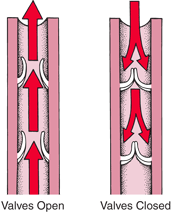Cultural reasons are all well and good, but feels like a handwave. Behavior is more believable when it has a practical, comprehensible rationale behind it.
Reasons we do it in human society:
- Revolving doors.
- Exit doors in stores because they're by the
checkouts (people ignore the "exit only" signs quite often though).
- Flow control in parking lots, restaurant kitchens, etc, to prevent collisions.
- Emergency exits, to prevent unauthorized entry.
- Theatres with single chokepoint doors for queued ticketing at the entrance, but multiple exit doors for the rapid dispersal of crowds afterwards.
- Process flow in car washes, loading docks, etc.
- Turning around is a giant pain in the butt, for rail rolling stock.
- Everything from signage, to the expectations of other travelers, relies upon the unidirectional flow of movement on roads.
From this, it seems that the best example we have is the vehicle. If aliens have eyes at the front, and find backing up or turning around in confined spaces to be awkward, perhaps from being long (someone suggested centaurs) or from being spined or shelled, then they are likely to build houses in a circular fashion, with a round central courtyard, then a corridor inside, then rooms arranged for suitable flow of movement around that corridor, each with an in and an out door. Their lives would be set up to facilitate this: different rooms at different times of day, perhaps following the sun.
Operations like making a coffee would be arranged as linear process flows along the countertop.
Causing someone else to have to back up or turn way would be considered rude.
Perhaps all houses are "clockwise", or perhaps different cultures are set up to flow around their houses in opposite ways. Perhaps they alternate on each level. Perhaps some are figure-8 or cloverleaf. The important thing is that people can flow easily around their property without having to turn in place, or obstructing others (thus, passageways should be wide enough for two to walk abreast).

